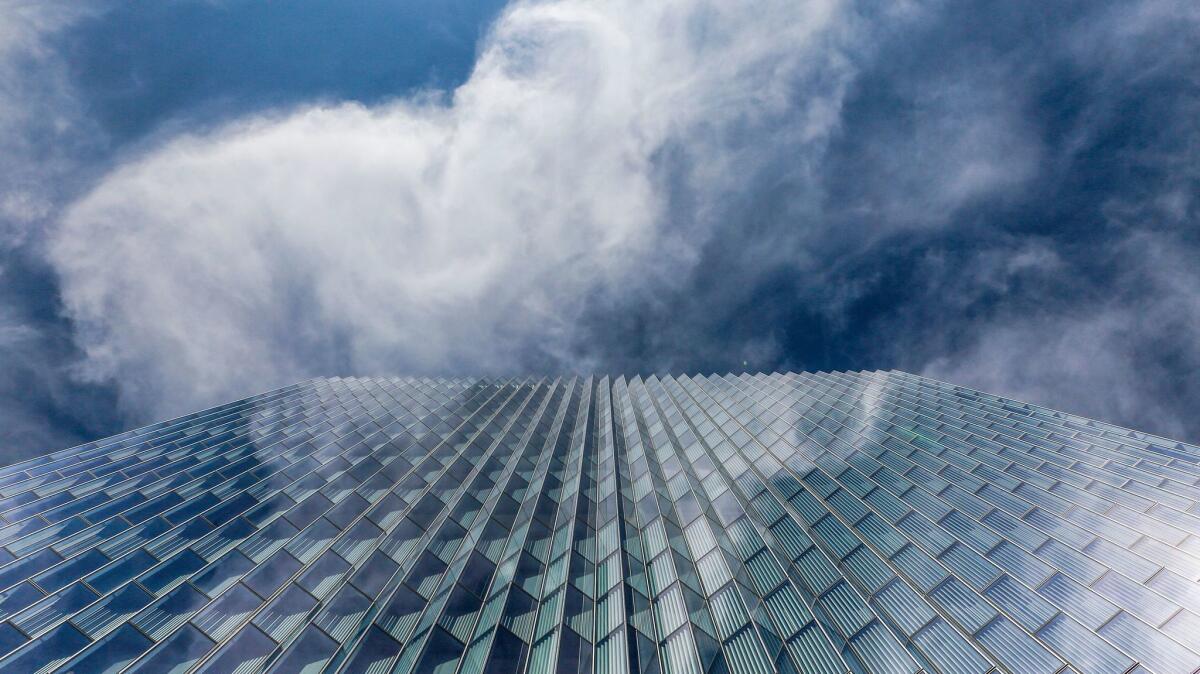Architecture’s top 10 for 2016

- Share via
This was a year in which Los Angeles shook off some ambivalence about its own status as a dense, tall, post-suburban city — and in which the profession of architecture continued to embrace, reassess and excavate its own history. It was also a year in which architecture critics, thankfully, saw enough completed high-profile buildings — after several years in which the aftereffects of the 2008 crisis kept that supply very low — to consider putting more than one on their year-end lists.
David Ireland House. In January the 500 Capp Street Foundation, with Jensen Architects and ARG Conservation Services, completed a masterful restoration of the house in San Francisco’s Mission District where artist David Ireland lived for more than three decades. The house itself was arguably his chief artwork, a battleship-gray Victorian on the corner of Capp and 20th streets that Ireland variously repaired, sliced open and remade beginning in the 1970s. An altogether genuine Bay Area answer to L.A.’s Eames House and the Donald Judd house and studio in New York.
Jan Shrem and Maria Manetti Shrem Museum of Art at UC Davis. Despite its modest size and budget, the single-story museum by architecture firms SO-IL and Bohlin Cywinski Jackson, wrapped in glass and walls of corrugated precast concrete and topped with a white canopy of aluminum beams, is a building, as I wrote earlier this month, to boost your faith in the future of American architecture.
L.A. houses saved. There are still plenty of residential landmarks to worry about in Los Angeles as potential tear-downs, but the 1942 house Thomas Mann commissioned from architect J.R. Davidson (purchased last month by the German government) and John Lautner’s 1963 Sheats-Goldstein House in Beverly Crest (pledged in February by its owner, along with a healthy endowment, to the
National Museum of African-American History and Culture. Architect David Adjaye was lead designer of this giant glass box of a museum partially buried below ground and sheathed in bronze-coated panels — a stirring rebuke to the white-marble monuments that surround it on the Mall in Washington and the best public building in the nation’s capital in a generation.
‘Roberto Burle Marx: Brazilian Modernist.’ Just in time for this summer’s Rio Olympics, in which his work played a minor television role, the Jewish Museum in New York mounted a comprehensive, sharp-minded tribute to the pioneering landscape architect Roberto Burle Marx, whose gardens and plazas brought some much-needed fluidity and biomorphic curves to the asceticism of International Style modernism.
‘Reporting From the Front: 15th International Architecture Exhibition.’ It was a banner year for Chilean architect Alejandro Aravena, who went from winning the Pritzker Prize in January to opening the Venice Architecture Biennale, which he directed, in May. Aravena’s exhibition managed to turn the typical Biennale priorities almost perfectly on their heads, producing a show driven by an interest not in form-making, novelty or pixels but instead the old, the worn, the borrowed and the handmade. Biennale president Paolo Baratta rightly called it a Biennale for the demand (rather than the supply) side of architectural practice.
The 1960s, restored. Among the landmarks of 1960s modernism put on firmer footing in 2016 are Marcel Breuer’s original Whitney Museum (now run by the Metropolitan Museum),
L.A.’s newest courthouse. A collaboration between the San Francisco and Los Angeles offices of
Southern California’s electoral wisdom. The silver lining on a presidential election that left much of the country shocked and dispirited? The election-day results in L.A. County, which saw voters giving the Measure M transit tax a massive victory (with more than 71% approval) while Santa Monica turned back thoroughly misguided limits on new development. The message from voters was clear: L.A., long ambivalent about density, the viability of public transit and tall buildings, is ready to embrace a more urban future.
Expo Line, phase two. Passenger rail reached Santa Monica, in the form of the Expo Line extension west from Culver City, for the first time since 1953. In the process the region also broke through the heavy psychological barrier represented by the 405 Freeway, suggesting that the divide between east and west in Los Angeles is shrinking on public transit even as it seems to grow on a daily basis by car.
SIGN UP for the free Essential Arts & Culture newsletter »
Twitter: @HawthorneLAT
The biggest entertainment stories
Get our big stories about Hollywood, film, television, music, arts, culture and more right in your inbox as soon as they publish.
You may occasionally receive promotional content from the Los Angeles Times.








